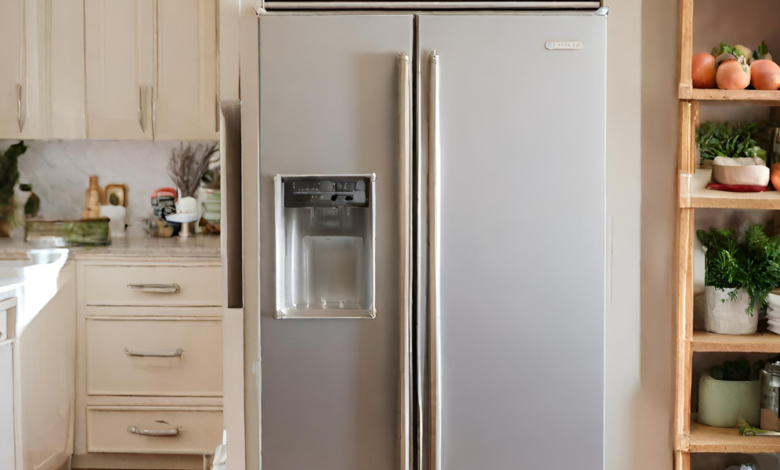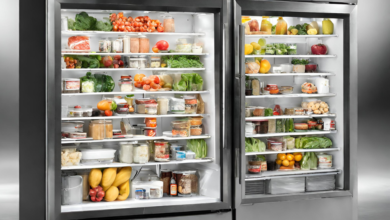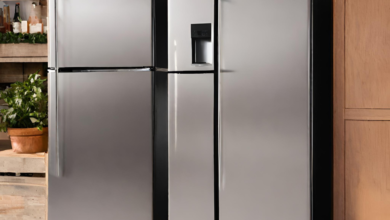Finding the Right Balance: Selecting the Ideal Refrigerator Size for Your Kitchen

The kitchen, often hailed as the heart of the home, is incomplete without a refrigerator. Selecting the right refrigerator size is a critical decision that involves a delicate balance between aesthetics, functionality, and efficiency. In this in-depth exploration, we will guide you through the intricate process of finding the ideal refrigerator size for your kitchen, covering aspects such as kitchen layout, storage needs, lifestyle considerations, and emerging trends in refrigerator technology.
I. Understanding Your Kitchen Layout
A. Built-In or Freestanding: Making the Right Choice
1. Built-In Refrigerators
Built-in refrigerators seamlessly integrate with your kitchen cabinetry, providing a sophisticated and cohesive appearance. Sizing considerations for built-in refrigerators involve precise measurements to ensure a flush fit within the cabinetry. Take note of height, width, and depth, accounting for any protruding handles.
2. Freestanding Refrigerators
Freestanding refrigerators offer flexibility in placement but require ample space around them for proper ventilation. When choosing the size of a freestanding refrigerator, measure not only the available width and height but also the depth to avoid any awkward protrusions into your kitchen space.
B. Counter-Depth vs. Standard Depth
1. Counter-Depth Refrigerators
Counter-depth refrigerators blend seamlessly with standard kitchen countertops, offering a built-in aesthetic. However, be aware that counter-depth models may sacrifice some storage space due to their reduced depth. Measure your counter depth accurately to ensure a harmonious integration.
2. Standard Depth Refrigerators
Standard depth refrigerators provide more storage capacity but may extend slightly beyond the counter line. Consider the overall layout of your kitchen to decide if the additional storage space outweighs the visual impact of a protruding refrigerator.
II. Tailoring Size to Family Needs
A. Assessing Refrigerator Capacity
1. Cubic Feet: A Crucial Metric
Understanding cubic feet is paramount when assessing refrigerator capacity. Aim for 4 to 6 cubic feet per adult in the household, factoring in your family’s weekly grocery needs. Consider not only the main compartment but also additional features like door storage and adjustable shelves.
2. Special Features for Enhanced Storage
For larger families or those who entertain frequently, consider refrigerators with features such as adjustable shelves, humidity-controlled drawers, and flexible storage compartments. These features optimize space utilization and enhance organization.
B. Freezer Considerations
1. Top-Freezer, Bottom-Freezer, or Side-by-Side
- Top-Freezer: Ideal for those who prioritize fresh food access. Pay attention to width and depth for adequate frozen item storage.
- Bottom-Freezer: Convenient access to fresh items at eye level. Consider width and depth, especially with a French door configuration.
- Side-by-Side: Equal access to fresh and frozen items. Measure the width for accommodating wider items such as pizza boxes.
III. Lifestyle and Unique Considerations
A. Specialty Refrigerators
1. Compact Refrigerators
Compact refrigerators are perfect for smaller kitchens, offices, or as supplementary storage. When choosing a compact refrigerator, assess available space and determine whether it will serve as the primary or secondary storage unit.
2. Drawer Refrigerators
Drawer refrigerators offer a unique and stylish alternative. Incorporating them into your kitchen design requires meticulous attention to dimensions to ensure both functionality and aesthetics.
B. Smart Refrigerators and Connectivity
1. Blending Technology with Lifestyle
Smart refrigerators with touchscreens, cameras, and connectivity options are becoming increasingly popular. When opting for a smart refrigerator, ensure compatibility with your kitchen layout and evaluate whether the added technological features align with your lifestyle.
IV. The Green Factor: Energy Efficiency
A. The Role of Energy Star Certification
1. Decoding Energy Star Ratings
Energy Star-certified refrigerators adhere to stringent energy efficiency standards. Look for the Energy Star label and review the annual energy consumption to minimize long-term energy costs while reducing your environmental footprint.
B. Ventilation and Clearances
1. Optimizing Refrigerator Efficiency
Proper ventilation is crucial for refrigerator efficiency. Maintain recommended clearances around the refrigerator to enhance airflow, promoting optimal performance and extending the appliance’s lifespan.
V. Conclusion: Striking the Perfect Balance
Choosing the right refrigerator size is an art, blending form and function to create a harmonious kitchen space. By delving into the nuanced considerations of kitchen layout, family size, lifestyle, and environmental impact, you can confidently find the ideal refrigerator size that meets both your practical needs and aesthetic preferences. Whether it’s a built-in masterpiece, a counter-depth gem, or a feature-rich smart appliance, the perfect refrigerator will transform your kitchen into a space where style meets substance. Find that balance, and watch your kitchen come to life.






